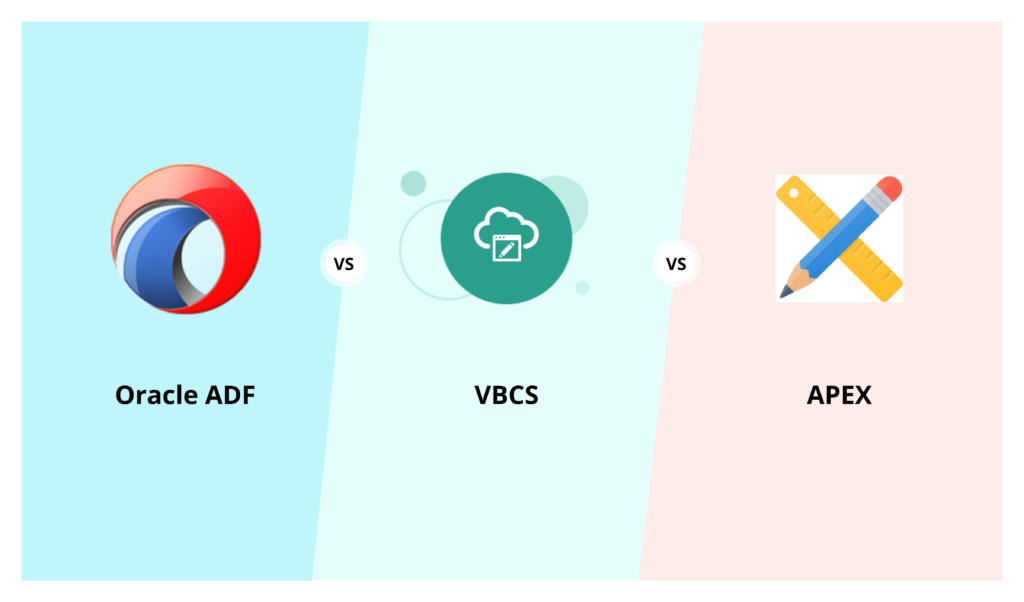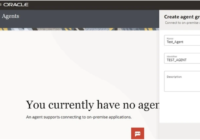Oracle Forms has been a trusted solution for building enterprise applications for decades. However, as businesses demand modern, web-based, and mobile-friendly applications, the limitations of Oracle Forms have become more apparent. Organizations are now seeking agile, scalable, and low-code solutions that enhance user experience, reduce maintenance efforts, and accelerate digital transformation.
This is where Oracle APEX comes in—a powerful low-code platform that enables seamless modernization of legacy applications. Migrating from Oracle Forms to APEX not only preserves your existing business logic but also enhances flexibility, performance, and integration capabilities.
In this blog, we’ll explore why migrating to APEX is the smart choice, the key benefits of low-code transformation, and best practices for a successful migration. Let’s dive in!
Why choose Oracle APEX?

As enterprises look to modernize their legacy Oracle Forms applications, there is an increasing need for a solution that is scalable, secure, and cost-effective. Oracle APEX stands out as the perfect choice for modernization, offering a low-code development framework that enables businesses to build and deploy modern web applications quickly and efficiently. Here’s why Oracle APEX is the ideal solution:
1. Low-Code, High Productivity
Oracle APEX enables rapid application development with a drag-and-drop interface, declarative programming, and minimal coding effort. This significantly reduces development time while ensuring high performance and functionality.
2. Web-Based & Mobile-Ready
Unlike Oracle Forms, which was built for client-server architectures, APEX delivers fully responsive, browser-based applications that run seamlessly on desktops, tablets, and mobile devices—without additional plugins.
3. Seamless Integration with Oracle Database
APEX is natively integrated with Oracle Database, ensuring high performance, security, and scalability. It allows direct access to database objects, making data handling faster and more efficient than legacy systems.
4. Cost-Effective Modernization
Oracle APEX runs on Oracle Cloud, On-Premises, and Autonomous Database at no additional licensing cost, making it a budget-friendly alternative to rewriting applications from scratch or investing in third-party platforms.
5. Improved Security & Compliance
Security is built into APEX, with features like access control, session management, and data encryption, ensuring that modern applications meet enterprise security and compliance standards.
6. Future-Proof and Scalable
With Oracle APEX, businesses can future-proof their applications by leveraging modern UI components, RESTful APIs, and cloud-native capabilities—ensuring that they remain agile in a fast-evolving digital landscape.
Best Practices for a Successful Oracle Forms to APEX Migration
Migrating from Oracle Forms to Oracle APEX is a strategic move that enhances application performance, user experience, and scalability. However, to ensure a smooth and efficient migration, organizations must follow best practices that minimize risks and maximize the benefits of modernization. Here’s how to get it right:
1. Assess & Plan the Migration Strategy
Before starting the migration, conduct a comprehensive assessment of your existing Oracle Forms applications. Identify:
- Business-critical forms that need immediate migration.
- Redundant or obsolete forms that can be retired.
- Complex functionalities that may require redesigning in APEX.
2. Optimize Database Objects & Business Logic
Oracle APEX operates natively within the Oracle Database, so take this opportunity to clean up and optimize database objects like:
- Tables, views, PL/SQL procedures, and triggers to remove unnecessary dependencies.
- Standardize naming conventions for easier maintainability.
- Reorganize business logic into reusable database packages for better performance.
Also read: A Step-by-Step Guide for Oracle Forms to APEX Modernization
3. Leverage APEX Native Components
Oracle APEX offers built-in UI components, dynamic actions, and declarative features that reduce development efforts. Instead of replicating Oracle Forms exactly, redesign interfaces using:
- Interactive Grids to replace tabular forms.
- Faceted Search & Charts for intuitive data visualization.
- RESTful Web Services for seamless API integrations.
4. Focus on User Experience (UX) & Responsiveness
Unlike Oracle Forms, APEX applications are web-based and mobile-friendly. Ensure:
- A modern UI with responsive layouts and accessibility features.
- Role-based access controls (RBAC) for secure user management.
- Intuitive navigation that enhances productivity.
5. Implement Phased Migration & Testing
A step-by-step incremental migration minimizes risks and allows for real-time improvements. Follow these steps:
- Prototype and validate key functionalities in APEX before full-scale migration.
- Test each module extensively for performance, security, and user acceptance.
- Run parallel testing between Oracle Forms and APEX for consistency.
6. Post-Migration Support & Optimization
After going live, continuously monitor the system for:
- Performance bottlenecks and SQL tuning opportunities.
- Security vulnerabilities and compliance measures.
- User feedback to enhance functionality and workflows.
Seamless Oracle Forms to APEX Transition
 Conclusion
Conclusion
Migrating from Oracle Forms to Oracle APEX is more than just a technical upgrade, it’s a strategic move towards a more agile, scalable, and future-ready application landscape. With minimal downtime, enhanced usability, and operational efficiency, APEX enables businesses to modernize without disruption.
At Conneqtion, our expertise in Oracle technologies ensures a seamless migration journey, from assessment to deployment and beyond. By choosing Conneqtion, you gain access to future-proof solutions, a modern UI, and comprehensive support that empowers your organization to thrive in the digital age.
Ready to make the shift? Let’s transform your legacy systems into powerful, low-code applications with Oracle APEX!







